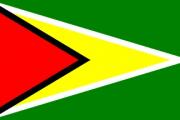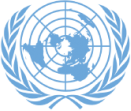Statement delivered by Ambassador Michael Ten-Pow as part of a panel discussion on the Guiana Shield as a multi-destination eco-tourism product at the United Nations Conference on the role of public-private partnerships in achieving the Sustainable Development Goals
Thank you Mr Chairman,
Allow me first to congratulate my friend Henry MacDonald, the Ambassador of Suriname, for the spectacular success of this Forum. I know that we were all riveted and inspired by this morning’s presentations and in particular the Q&A between Amir Dossal and the former President of Haiti, Mr Michel Martelly.
I would like to heed the appeal by Amir Dossal, who said this morning that it is time to stop talking and just do what we know we have to do. And what we have to do is to build strategic partnerships with the private sector. We heard from the UNDP representative, Ms. Jessica Faeta, this morning that 90 per cent of jobs created globally are created by the private sector. We also heard that of the 2 to 3 trillion dollars needed annually to achieve the SDGs, only $150 billion will come from ODA. And so the challenge for our countries is to create bankable projects based on innovative business models that can attract private sector investments.
So the focus of this afternoon’s first panel will be on a concrete proposal which we feel offers great potential for successful public-private partnerships. I’m referring here to the project launched by Ambassador MacDonald to unlock the eco-tourism potential of the countries situated on the north-eastern fringe of South America. These include parts of Colombia, Venezuela, and Brazil and all of Guyana, Suriname and French Guiana. Together they comprise the Guiana Shield. At this initial stage, the project is being launched with the participation of Suriname and Guyana only, but we hope that in due course all the countries of the Shield can be involved.
Let me tell you a little bit about the Guiana Shield. Despite the fact that the Shield consists of some of the oldest geological formations on the planet dating back some 1.7 billion years, it is an area that is not very well known. The territory covered by the Shield is part of the Amazonian Basin and most of it is covered by rain forests. In the case of Guyana, over 85 per cent of the land mass is covered by forest or woodland. And one example of a successful partnership, though not a public-private partnership, is the current arrangement between the Government of Norway and the Government of Guyana whereby we preserve these forests and exploit them sustainably in return for cash payments that can be used for other projects that are aligned with the sustainable development goals.
The forests of the Guiana Shield are dissected by large rivers flowing out to the Atlantic Ocean. In Guyana, which, with an area of 215,000 square kilometres, is by far the largest territory in CARICOM, the largest of these rivers is the Essequibo River, which is more than 1,000 kilometers long and over thirty kilometers wide at its mouth.
And I will let you into a little secret here. We Guyanese love to tease our Barbadian friends that the whole island of Barbados can easily fit in the mouth of the Essequibo River. But, as we all know, size does not matter.
As they make their way to the Atlantic, the rivers of the Guiana Shield plunge over hundreds of scenic waterfalls, the most spectacular of which is the Kaieteur Falls in Guyana which has a sheer single drop of 741 feet. Many travellers who have seen the Kaieteur Falls have said that it is one of the most majestic waterfalls in the world.
Again using the example of Guyana, the indigenous peoples, the Amerindians, who migrated to the Guiana Shield 10,000 years before Columbus, have maintained their indigenous languages, their culture and their way of life in harmony with nature and with their environment.
Ambassador MacDonald will no doubt tell you about the rich cultural, linguistic and ethnic diversity in our countries. So I will mention just two examples of the fauna that is indigenous to our region. The largest freshwater fish in the world - the arapaima, which grows up to a length of 10 feet, is found in our creeks and rivers. And for birdwatchers the Harpy Eagle, one of the largest and most powerful birds of prey in the world, also has its habitat in the Guiana Highlands.
The sad reality, however, is that very few tourists know about this rich biodiversity and about the natural beauty and attractions of the Guiana Shield. And there are a number of reasons for this. Tourism is a very competitive business and marketing your product to the global consumer is very expensive. Even an attractive product like eco-tourism in the countries of the Guiana Shield has to be marketed.
But before you can market a product, you have to develop its potential. Travel to Guyana, for example, needs to be made easier by improving air connectivity. Infrastructure has to be improved in terms of road networks, urban amenities and tourism infrastructure in general beyond the more developed coastland.
Starting from such a low base creates multiple business opportunities for investments in almost any area, whether it's in the development of a marketing strategy for eco-tourism in the region, expanding air connectivity, building and operating eco-tourism lodges and facilities, building mini-hydropower stations to provide power to the many villages and towns that dot the interior of Guiana Shield countries, or simply putting commercial systems in place for the supply of goods and services to the tourism industry.
A farsighted partner from the private sector will see, for example, the potential for Guyana to take advantage of its geographical location to become a hub for air travel between South America and Africa. From Georgetown in Guyana to Dakar in Senegal is a mere 6 1/2 hours. There is also tremendous potential for tourism in the beautiful but secluded Pakaraima Mountains of Western Guyana, where the flora and fauna in the cloud-covered table mountains inspired Sir Arthur Conan Doyle to write his famous novel, "The Lost World".
We hope that this multi-destination tourism initiative for the Guiana Shield, which is being launched in the International Year for Sustainable Tourism Development, will help to ensure that the Guianas do not remain a lost world for much longer. But that, by forging mutually beneficial partnerships with the private sector, we can put our countries squarely on the eco-tourism map where they belong. I am confident that when tourists come to discover the countries of the Guiana Shield, they will like what they see.


